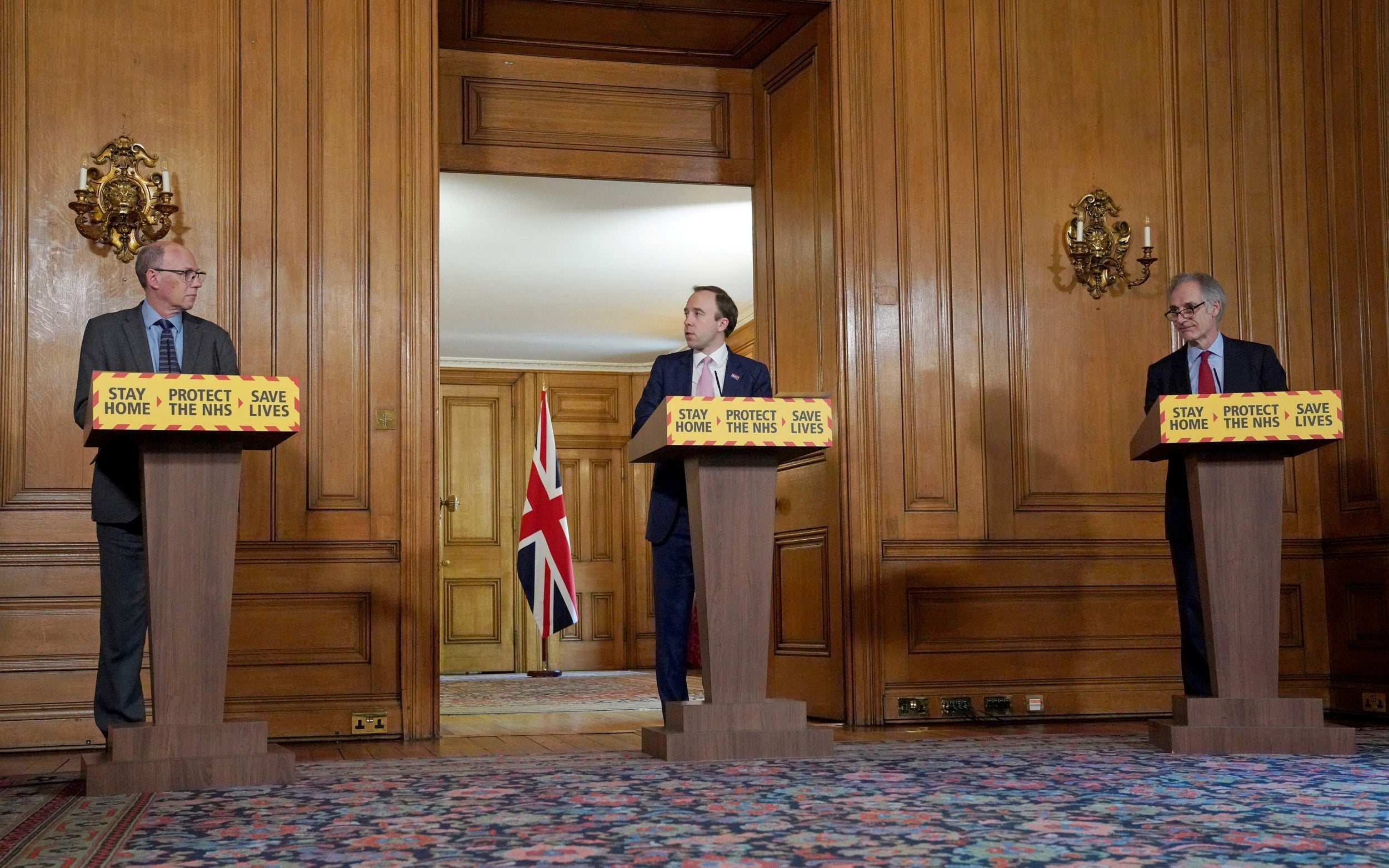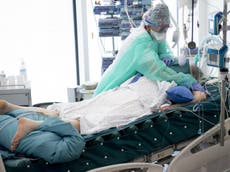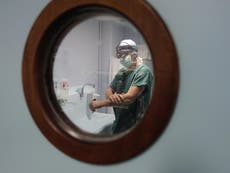100,000 daily UK coronavirus tests target has been met and exceeded, government says
Health secretary Matt Hancock says army of 18,000 tracers will be in place by mid-May to track down contacts of those who test positive
Health secretary Matt Hancock has claimed success in his bid to achieve 100,000 daily coronavirus tests by the end of April, with official figures released at Downing Street showing 122,347 tests in the UK on Thursday.
But there were accusations that the government had moved the goalposts to achieve the ambitious deadline, by including more than 27,000 home-testing kits at the point they were sent out to members of the public rather than waiting until the test has been completed.
Thursday’s figure - on the final day of the deadline - represented a leap of more than 18,000 from the previous day’s tally of 81,611.
It brought the total number of antigen tests - which show whether an individual currently has the illness - over the course of the outbreak to more than a million, though the UK's 1,023,824 remains well behind Germany, where 50,000 were being tested a day as early as the start of April.
Mr Hancock also announced that he aims to have an army of 18,000 contact tracers in place by mid-May to track down contacts of those shown by tests to be positive for Covid-19.
Speaking at the daily Downing Street coronavirus briefing, Mr Hancock revealed that the total UK death toll has risen to 27,510 over the course of the outbreak, with 739 fatalities in all settings on Thursday.
Silence for key workers who lost lives to coronavirus
Show all 30The testing total, which was at about 10,000 when Mr Hancock set his target at the start of April and was hovering around 20,000 little more than a week ago, was rapidly increased over the past few days with the expansion of eligibility to wider groups of people and the establishment of 49 drive-through centres and 96 mobile testing units.
More controversially, Thursday's figures were boosted by the 27,497 home testing kits sent to individuals through the online retailer Amazon as well as a further 12,872 sent to "satellite" sites within the health service, which were counted on dispatch rather than after they have been returned to labs and analysed.
Mr Hancock heralded the expansion in testing as an “incredible achievement”.
He said: “I knew that it was an audacious goal, but we needed an audacious goal, because testing is so important for getting Britain back on her feet.”
He praised his team for working “tirelessly… with grit and determination” to reach the goal.
The health secretary said he “did not recognise” the claim that counting practices had been changed to include home-testing kits earlier.
And testing tsar John Newton insisted there had been “no change to the way tests are counted”, saying that official advice had always been to count kits when they were sent out.
But Liberal Democrat acting leader Ed Davey accused the Government of playing “fast and loose with the truth”.
“The Health Secretary’s arbitrary target of 100,000 tests by the end of April was always a hostage to fortune, and the truth is, he missed it,” said Davey.
“It’s extremely disappointing the Government have decided to massage the metrics rather than admit they fell short, as this will only undermine public confidence.”

Labour's shadow health secretary Jonathan Ashworth said: “Labour has repeatedly called for more testing, and increasing testing is an important milestone. But many would have expected the 100,000 promise to have been met by actually carrying out testing, not simply because 39,000 kits had been mailed out. Tonight’s headline figure shouldn’t count tests that hadn’t been used - or indeed, might never be used - as a completed test. Ministers promised transparency - the public and NHS staff deserve clarity.
“In any event, this figure was never a strategy. We need a fully resourced testing, isolation and tracing programme and ministers should be using this lockdown time to put the fundamentals of infectious disease control in place.”
Mr Hancock said that the testing capacity now available was “crucial to suppress the virus” and would “help us to unlock the lockdown”.
It would be backed up by an initial 18,000 contact-tracers to be in place by the middle of May, with more to be recruited if required.
“The combination of contact tracers and new technology, through our new Covid-19 NHS app, will help tell us where the virus is spreading and help everyone to control new infections,” he said.
Speaking a day after prime minister Boris Johnson promised a “roadmap” out of lockdown, Mr Hancock said: “In recent weeks we’ve had to impinge on historic liberties to protect our NHS and our loved ones and yet our goal must be freedom.
“Freedom from the virus, yes - and we will not lift measures until it is safe to do so - but also we care about the restoration of social freedom and economic freedom too – each citizen’s right to do as they please.
“For now, we’re working together to stay home, we’re impinging on the freedom of all for the safety of all.
“With this next mission of test, track and trace, I’m seeking a solution that allows us, by each of us participating, to target the measures that are needed with much more precision and so to reassert, as much as is safely possible, the liberty of us all.”
Prof Newton rejected suggestions that the UK’s slow adoption of mass testing had “kept us in lockdown a day longer”.
Stay-at-home measures were introduced in March not because of a lack of tests but because of the wide circulation of the Covid-19 virus in the population, he said.
“Cases were popping up with no obvious connection to other cases and the infection was entering the exponential growth phase and at that point access to limitless testing even if we had had it would’ve made no difference,” he said.
“The decision to enter into lockdown would have been the same and would’ve been taken at the same time.
“In the same way the route out of lockdown has not been blocked by low levels of testing. We can relax social distancing only when the Government’s five tests are met, and that means particularly getting the infection rate right down.
“Testing will help to keep it out of control once we’re out of lockdown but our levels of testing have not kept us in lockdown a day longer.”
Subscribe to Independent Premium to bookmark this article
Want to bookmark your favourite articles and stories to read or reference later? Start your Independent Premium subscription today.







Join our commenting forum
Join thought-provoking conversations, follow other Independent readers and see their replies
Comments